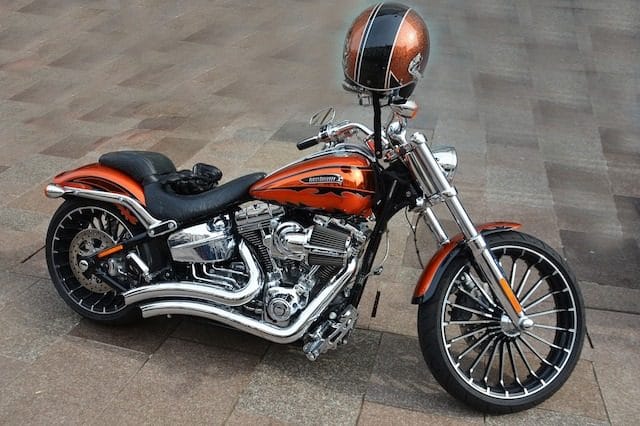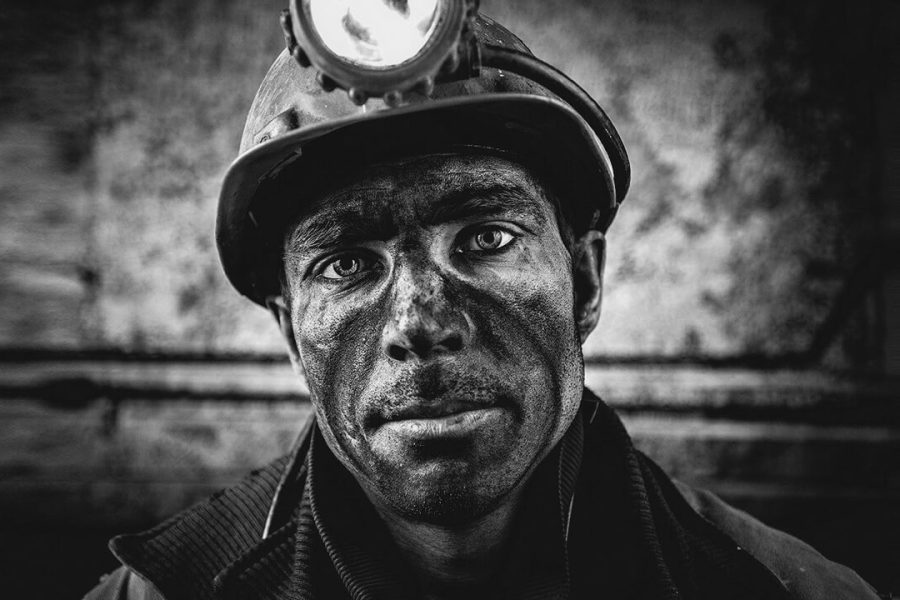It’s not every day that you come across a shrine in the Western or secular world, but there are plenty of them out there. Many people in the modern world use the word in a humorous way, such as if someone is a fan of a certain celebrity or athlete, they might have a shrine in their home full of that person’s memorabilia. But actual shrines of religious significance exist all over the world. Some of them may be a little more esoteric or downright weird than others.
10. Temple of Dobby the House Elf

World Harry Potter has become firmly entrenched in pop culture, with millions of fans who have read the books and watched the films. It has become a cultural phenomenon that no one could have expected, and to appreciate just how strong its grip is, you just have to go to Pembrokeshire.
IN movies about Harry Potter The character of Dobby the house elf proves to be both a nuisance and a helper of sorts for Harry and his friends. Harry eventually frees the elf, and he becomes a slightly annoying but useful ally until his untimely death.
On-screen, Dobby died at a place called Freshwater Beach, west of Pembrokeshire. In real life, fans continued to visit the site to mark the grave of the entirely fictional and computer-generated character, building shrines to his memory.
Dobby's shrine isn't all that deep, but rather a pile of stones marking the spot where he died. One stone reads, "Here lies Dobby, the free elf." The stones are also mixed in with scattered socks, as Dobby was given the sock that allowed him to become free.
The area is actually a protected conservation area and the National Trust, which looks after it, has asked people to stop leaving stones and socks there because of the danger they could pose to local wildlife.
9. Japanese Temple of Hemorrhoids

If you were to make a list of all the things you never wanted to honor and venerate, where do you think hemorrhoids might fit? If you're in Japan and visiting the Kunigami Shrine in Tochigi Prefecture, those swollen little backaches might not make it onto your list at all, considering you'll find a hemorrhoid shrine there.
By way of explanation, in the Shinto belief system, the various gods known as kami are beings who love to laugh. Also, a good joke, it seems. The shrine is for those who want to exorcise their bugbear asses by eating egg offerings and washing their asses in what seems to be a ritualistic manner. If that fails, some people literally shake their asses in front of the shrine itself.
The specific ritual requires a person to bathe in a sacred river, then visit a shrine, point the butt of a rifle at a holy egg, and say a prayer. Although there are literally thousands upon thousands of Shinto shrines in Japan, this is the only one dedicated to treating hemorrhoids.
8. Temple of the Indian Motorcycle God

Like most places in the world, India has seen too many drunk driving accidents over the years. People there often leave something at the scene of an accident to memorialize those who died, but the Bullet Baba temple in Jodhpur has taken things to a new level.
The legend of this shrine tells of a man who crashed his motorcycle at this site in 1988. The police came to clean up the scene and took the bike to their station, but the next day it somehow ended up back at the crash site. The police emptied the gas tank and chained it, but when they returned, the chains were broken and the bike was back at the crash site.
It was decided that the bike should stay where it was, and a shrine was built around it. The bike sits on a stone dais, encased in glass. People passing by offer a quick prayer to the God of Motorcycles, known as Om Banna or Bullet Baba, because the bike is a Royal Enfield bullet. Some simply honk their horns like a motorcycle deity.
People will leave flowers and even full bottles of alcohol at the site in hopes of receiving the god's blessing and a safe journey. A priest works there and performs daily rituals and services.
7. Temple of the Miraculous Tortilla

If you witnessed a real miracle, you might want to build a shrine on the site yourself. But you should check in advance, what exactly qualifies as a miracle? For Maria Rubio, the answer to that question was given back in 1977, when she was preparing to make a bean burrito and saw the face of Jesus in her tortilla.
Mary was one of the first people to see the face of Jesus in food. It's something of a cliché these days, but in 1977 it was new and novel. So new, in fact, that she and her family ended up on television and became famous, if not infamous, as a result.
While some mocked Rubio, others believed. The house itself became a shrine to the tortilla, with many visitors coming to see it over the years. The family kept it for about 30 years until it finally fell apart, as ancient tortillas do.
6. North Korean escalator

North Korean leader Kim Jong-il died in 2011, paving the way for his son to take over the reins of power. But before he finally passed away, the infamous leader took his last photo in a Pyongyang supermarket as he walked down an escalator.
Because it was the man’s final image, it became inextricably linked to him and his legacy. As a result, the escalator itself became a shrine to the fallen ruler. A video allegedly released by the regime afterwards showed mourners crying and falling off the escalator, with one complaining, “If only he could ride it again.”
5. Middle Buddha of Auckland

Downtown Oakland, California, may seem like an unlikely place for a Buddhist temple, but that doesn’t change the fact that it’s there. A statue of Buddha and its accompanying shrine stand smack in the middle of a busy street. Drape flowers and flags, members of the local Vietnamese community pray there every day.
The shrine was never meant to be a shrine. Instead, a local resident, annoyed by how much trash and vandalism was going on in the area, went out and bought a cheap Buddha statue to put up in the hopes that it would scare people away. At the very least, it was meant to be an annoyance, something to encourage people to move on.
While it may have worked for that purpose, it also began to attract Buddhists. Dozens of people began arriving to pray and make offerings, turning the simple shrine into something more bizarre. Soon it had a full enclosure and even a sound system to play soft music. Today, it is a tourist attraction as well as a working shrine, and the offerings are removed weekly.
4. Temple of the Naughty Beggars in Bangkok

In the north of Bangkok, you'll find Chuchok Temple, dedicated to a beggar who is said to have found good fortune as a result of his actions in a past life. If you've come to ask for favors from Chuchok, you'll need to appease him. And how do you do that? By getting a little dirty.
This type of shrine works like this: you ask for a favor with a small offering. If the spirit grants it, you must return with a much larger payment or face the consequences. Chuchok is said to have been a lecherous man, so he likes payments like stripper dances.
As the story goes, a man who had begged Chuchok for favors many years ago won the lottery and returned with what were called coyote dancers to put on a show. It is now common for people to bring dancers, so to speak, in hopes of good luck.
3. Shrine on Mount Kemukus

Any place colloquially known as Sex Mountain is bound to have an interesting story, and that certainly applies to Mount Kemukus. Muslim pilgrims head to this Indonesian mountain in search of wealth, good fortune, and all that good stuff. The method for obtaining it is, of course, a bit surprising.
There is a small temple at the top of the mountain. Those who worship there are granted wealth and good fortune if they have sex there every 35 days, 7 times in a row. The only catch is that they cannot do it with their spouse. Most people seem to just opt for anonymous fun.
As you can imagine, when this became world famous, it did not go down well with many of the more humble locals. Attempts were made to ban and close the temple, which ultimately destroyed the local economy.
2. Mimizuka Ear Temple

Not every temple is silly or weird, some are just downright horrific. Mimizuka Temple in Kyoto, Japan, is one of them. The shrine, a small hill with a stone structure on top, was built to house the thousands and thousands of ears and noses cut off from Korean soldiers during a 16th-century war.
Japan attempted to invade Korea between 1592 and 1598. At the time, it was common to cut off the enemy's head as a trophy. But since there was a great distance between the war and Japan, it was decided to scale down the scale and simply take the ears and noses of the dead as souvenirs.
The pieces were returned to Japan, pickled to preserve them, and placed in a mound that literally translates as "ear mound." Inside are the remains of 38,000 Koreans.
1 Thai Temples of Red Fanta

In Thailand, belief in ghosts is the norm. People there often take a more active role with their spiritual inclinations than in a country like the United States, where a third of people admit to believing in ghosts.
For many Thais, believing in ghosts means dealing with them. It seems that the easiest way to appease a spirit is to feed it well. At the low end of the scale, you can offer a ghost some water and rice, but that’s pretty simple. Bananas and coconuts are a step up, and will make a ghost happier. But the best ghost treat seems to be Red Fanta .
If you're not familiar, Red Fanta is a strawberry-flavored soda. You can find cups and bottles of it at shrines all over Thailand. The bottles even come with straws to help refresh the spirit.
So why Red Fanta? It’s a bit complicated and not entirely clear. Offerings of “sweet water” for many spirits is a common practice, and soda is a perfect fit. The color red also draws inspiration from Chinese culture, where red is a lucky color, not to mention blood, which can represent both fertility and sacrifice in Thai culture. And at some point, it seems like it just stuck, like being in the right place at the right time, and became the preferred offering of the shrine, to the point that Thailand has become the fourth-largest Fanta market in the world.













Оставить Комментарий